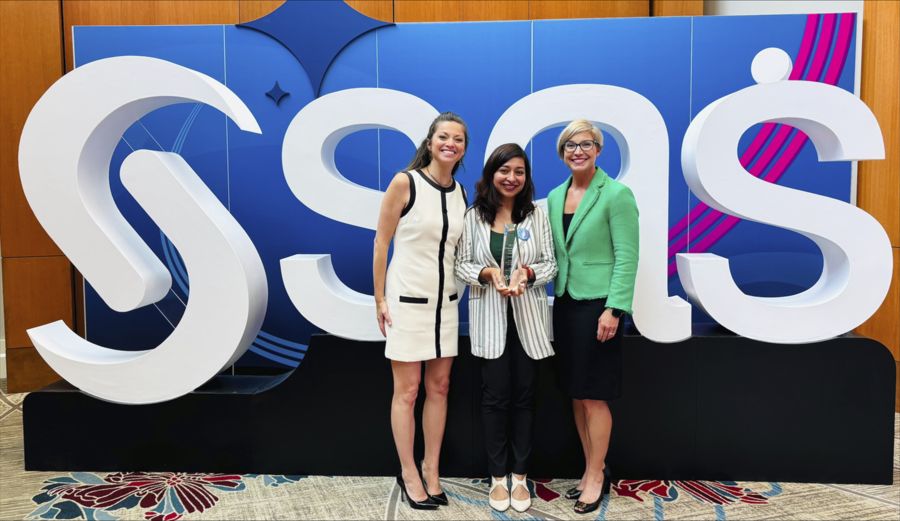ORLANDO, Fla. — Once she learned of the Community Uplift Award competition among SAS customers worldwide, Harmandeep Sharma, Ph.D., only had two days to pull together her application.
“Midnight was the application and I submitted my application at 10 p.m. that night … hoping,” said Sharma, a research assistant professor in the Department of Natural Resources and Environmental Design at N.C. Agricultural and Technical State University.
Her effort wasn’t wasted. Sharma was honored with the award, which recognizes customers who have made an impact on the community using SAS products, at the SAS Innovate 2025 conference May 7.
“There was no way that I was thinking, “I will be a winner,’” said Sharma, “especially the first winner, because they picked three top winners.”
Sharma uses SAS technologies to analyze data collected from drones and in-ground sensors that monitor crop conditions in real time. By developing predictive models, she studies the impact of precise input applications—such as irrigation and fertilizer—on crop yield and quality. She shares these insights through workshops with farmers, Cooperative Extension agents, faculty, and graduate students, as well as through presentations at scientific conferences.
“Dr. Sharma and the N.C. A&T team earned the first-place Community Uplift Award because of the meaningful, boots-on-the-ground impact they’re making in agriculture,” said Dominique Moon, SAS customer success manager for North Carolina universities. “Their innovative work in SAS Viya is helping create data-driven solutions that make farmers’ lives easier and their operations more efficient.
Sharma and a team of students also used SAS products to efficiently generate quality microdata on gender and racial disparities among small-scale farmers, while still protecting sensitive information. Ultimately, this could give policymakers more comprehensive data on the challenges faced by female and minority owners of small-scale farms.
“Elegant use of SAS to address multiple complex social, cultural and ecological problems all at once,” a juror commented on Sharma’s winning entry in the contest.
“I am incredibly grateful for this opportunity to serve as the technical lead representing North Carolina A&T in collaboration with SAS, through the SAS Agricultural Analytics platform,” said Sharma. “This initiative has been transformative — not just for me, but for our College of Agriculture and Environmental Sciences, our faculty, and especially our students. SAS has a clear commitment to ensuring our students are equipped with the skills needed to lead in data analytics and artificial intelligence within the agricultural sector.”
SAS’s principal advisor for AI and biostatistics John Gottula, Ph.D., who has worked closely with Sharma, noted her standing as a world-renowned crop scientist.
“She is bringing her deep subject-matter expertise in the horticulture and crop science to bear, while also building this newer skill set of artificial intelligence, and synthesizing both of those things together for her research, and then, she’s taking others on that learning journey with her,” said Gottula, who also is adjunct faculty in the college. “That’s truly a measure of good leadership.”
SAS paid for Sharma’s registration and travel to the SAS Innovate conference in Orlando, Fla., which Sharma particularly appreciated.
“The conference is very intense, but it’s also an incredible way to connect with people,” said Sharma, a 2024 SAS HBCU+ Fellow. She emphasized the value of the networking opportunities, which she sees as a bridge between N.C. A&T students and industry professionals. “Across our university, students and departments are working with a wide range of data,” she said. “If companies have internship opportunities, we have talented students ready to contribute.”




